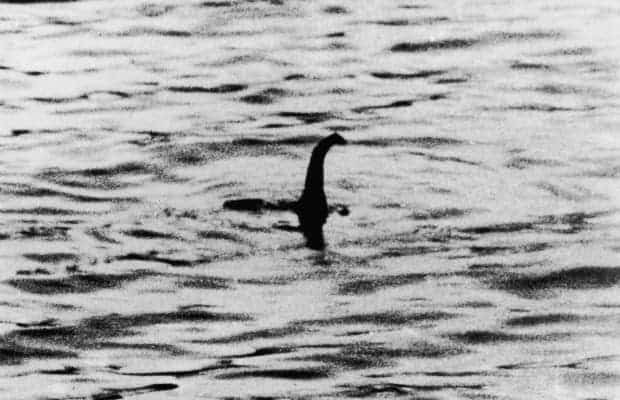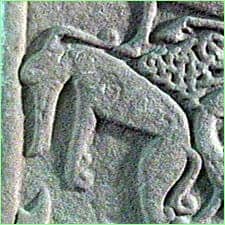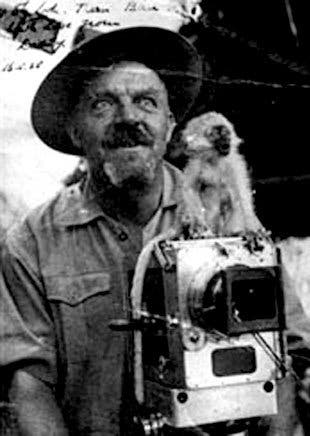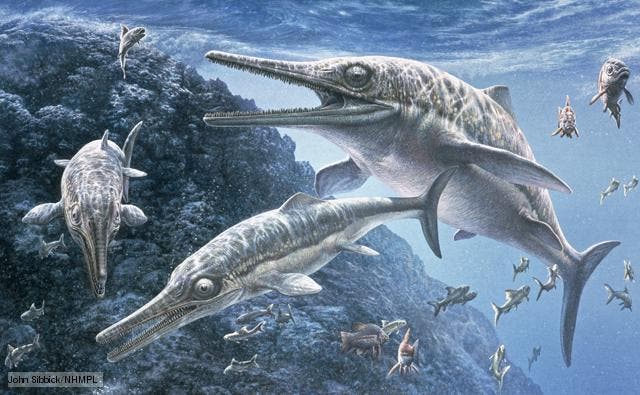
For at least 1,500 years, the Scottish Highlands have been home to one of the world’s most mysterious myths — that of the infamous Loch Ness Monster.
Despite thousands of supposed sightings of a large reptile-like creature protruding its long neck above the surface of the Loch Ness, a large lake near Inverness, Scotland, any efforts to produce credible evidence of the freshwater beast have proved fruitless.
How the legend of the Loch Ness Monster grew
The first mentions of a Nessie-like figure in Scotland date from antiquity. In the 1st century A.D., the Roman Empire was attempting to conquer lands north of England, but they came across resistance from the Picts, a group of Celtic-speaking peoples named so because of their habit of painting their bodies with dye (from Latin picti, “painted”).
Besides being renowned as fierce warriors — Scotland holds the distinction of never falling to the invading armies of Rome, even though the Romans attempted conquest numerous times — the Picts left behind intriguing carved, standing stones. Some of them lie around Loch Ness, depicting various animals native to Scotland in a lifelike manner — all but one.

One of the animals depicted in the Pictish carvings is a strange creature with an elongated beak and what look like flippers instead of feet. Some have called it a ‘swimming elephant’, but later many ascribed these ancient depictions of a mysterious aquatic animal as the first evidence for an idea of the Loch Ness Monster.
Loch Ness is the largest and second-deepest body of freshwater in the British Isles. Being so imposing, it’s not that surprising to see that Loch Ness occupies a central role in Scottish folklore, in which it is associated with various mythical animals. Among them are so-called water-horses, also known as water-kelpies. According to one version of the myth of water-horses, these magical creatures lure small children into the water by offering them rides on their back. But once the children hop aboard, their hands get stuck to the water-horse, and they are dragged to the watery depths to their death, with no trace left behind except for their livers washing ashore the next day.
One of the earliest written accounts of a reference associated with a Loch Ness Monster-like creature dates from 565 A.D. In his biography, Saint Columba, an Irish abbot and missionary evangelist credited with spreading Christianity in what is now Scotland, recounts how he once was on his way to visit a Pictish king when he suddenly stopped along the shore of Loch Ness dazzled by an unbelievable sight. A man swimming in the lake was attacked by a large beast, and Columba immediately reacted, raising his hand and invoking the name of God, commanding the monster to “go back with all speed”. The freshwater monster complied and the man’s life was saved.
There are about a dozen or so legends of this sort, but the modern legend of the Loch Ness Monster can be traced back to the early 1930s.
On May 2, 1933, the Inverness Courier published an article that reported how a local couple sighted “an enormous animal rolling and plunging on the surface” of the lake. The editor of the Scottish newspaper used the term ‘monster’ to refer to the creature reported by the young couple, and the designation stuck ever since.
During this time, a new road had just been completed along the shore, offering an unprecedented clear view of the loch from the northern side. Soon, other newspapers in Britain sent their correspondents to this intriguing Scottish lake. Radio programs were regularly interrupted to bring the latest news — consisting of rumors and interviews with locals — from the loch.
In late 1933, during peak Loch Ness Monster hysteria, a British circus offered a reward of £20,000 (worth nearly £1,5 million in today’s money) for the capture of the beast. Naturally, this led to thousands of people flocking to the Scottish lake, camping on its shores, and even venturing out in small boats in hopes of capturing a glimpse of the long-necked creature.
In the midst of this confusion, there were naturally some who sought to turn a profit from all of this attention. In 1934, the London Daily Mail published a photo supposedly showing the fabled Loch Ness Monster. Later, in the 1990s, it was revealed that the photo was an elaborate hoax — the ‘monster’ was nothing more than a toy submarine with a fake head and neck attached.

Later, in December, the London Daily Mail hired actor, film director, and renowned big-game hunter Marmaduke Wetherell to track down the Loch Ness Monster. As you might expect, the campaign launched by the same newsroom that proliferated the photo hoax was dubious, to say the least. Conveniently, after just a few days, Wetherell found fresh footprints that were left by a large, four-toed animal. He made casts and sent them to the Natural History Museum in London, confident that the scientists there would confirm the tracks were made by “Nessie” itself.
In the meantime, the Daily Mail quickly published the story of the footprints, running the dramatic headline: “MONSTER OF LOCH NESS IS NOT LEGEND BUT A FACT.” In response, thousands of people flooded Loch Ness and booked all the free rooms in nearby hotels at Inverness just so they might catch a glimpse of the mythical beast.

The analysis from the Natural History Museum did eventually come back — and it was actually what you’d expect. The zoologists there said the footprints were made by a hippopotamus, which is obviously not roaming through the wild in Scotland. Instead, the prints were made using a stuffed hippo foot by a nefarious agent aiming to create yet another hoax. It’s unclear whether Wetherell was indeed the perpetrator of the hoax or just a gullible victim, but the Daily Mail seems to have profited from the hype.
But this embarrassing episode did burst the hype bubble around the Loch Ness monster. In the subsequent decades, no serious scientist worth their salt would take any research into anomalous activity at the lake linked to Nessie seriously. However, some scientists would occasionally go on the record to dismiss reports of strange animals at the loch, pointing out that — when they weren’t outright hoaxes – the sightings were due to optical illusions caused by boat wakes, wind slicks, floating logs, otters, ducks, or swimming deer.
Is the ‘real’ Loch Ness Monster an ichthyosaur?
Real sea monsters did, in fact, exist at Loch Ness — about 170 million years ago.

In 1966, an amateur paleontologist called Norrie Gillies discovered the fossils of a 13-foot-long ichthyosaur while he was having a stroll near the Storr Lochs power station in Edinburgh. Gillies sent a letter to the Royal Scottish Museum and a team was sent to investigate the fossil.
But the fossils were encased in rock and proved difficult to study at the time, which is why they remained forgotten in a storeroom of the museum until 50 years later when Gillies’ son, Allan Gillies, urged Stephen Brusatte, a professor at University of Edinburgh, to resume the analysis of the ichthyosaur fossils for his father’s sake.
The researchers used new techniques to free the fossil from surrounding rock, and reconstruct the ichthyosaur’s frame. This way, they learned that the fossils likely belong to a new species of ichthyosaur, although it’s not clear yet where exactly it falls within the tree of life.

While dinosaurs roamed the earth, ichthyosaurs were the kings of the seas. Based on fossil evidence, they first appeared approximately 250 million years ago and at least one species survived until about 90 million years ago.
Its dolphin-like body featured a small sail-fin on its back and advanced flippers that allowed the creature to swim at high speeds, perhaps as fast as 33 km per hour (21 mph). It also had a very long snout filled with hundreds of sharp teeth.
Paleontologists have been lucky enough to find an abundance of ichthyosaur fossils. Thanks to these findings we’ve come to know that the ancient sea creature had large ear bones that allowed it to locate both prey and predators, or that it used to give birth to live young instead of laying eggs as a fish would. Eventually, Ichthyosaurus was outcompeted by the arrival of better adapted marine animals such as pliosaurs and plesiosaurs.
“People don’t realize that REAL sea monsters used to exist,” Steve Brusatte of the University of Edinburgh’s School of Geosciences told AFP.
“They were bigger, scarier, and more fascinating than the myth of Nessie. The new fossil is one of them. It actually lived in Scotland 170 million years ago!”
Since the fossils resemble the myth of Nessie, scientists have dubbed the Isle of Skye specimen the Storr Lochs Monsters. According to some theories, Nessie could be the descendant of such an aquatic reptile that became trapped in the lake. Suffice to say, there’s no actual evidence of such a thing ever occurring — here’s how we know for sure.
Okay, how about a giant eel?
In 2019, researchers at the New Zealand’s University of Otago performed DNA analysis on samples of water from Loch Ness. The environmental DNA (eDNA) data shows that there is no evidence of any reptilian sequences in the samples. “We can be fairly sure that there is probably not a giant scaly reptile swimming around in Loch Ness,” Prof. Neil Gemmell, a geneticist at the University of Otago, told CNN.
Instead, the scientists found high amounts of eel DNA. Eels are actually very plentiful in the loch system, and the sheer volume was quite surprising. They normally grow to about four to six feet in length, and some people claim they’ve seen some organisms that are much larger than that.
The researchers do admit, however, that this sort of genetic investigation is only as good as our references.
“Loch Ness is vast and given that eDNA signals in water dissipate quickly, lasting days to weeks at most, there remains the possibility that there is something present that we did not detect because we sampled in the wrong places at the wrong time, or our metabarcoding method could not detect ‘Nessie’ because the sequence could not be matched with anything in the sequence databases.”
That being said, it’s impossible to prove a negative since the absence of evidence is not necessarily evidence of absence.
“Our investigation, like every investigation before it, has no definitive proof of the monster. Proving something does not exist is pretty much impossible. We do however have a further theory to test, that of the giant eel, and it may be worth exploring this in more detail.”
Regardless of whether or not you believe in the Loch Ness Monster, what’s certain is that it is a symbol of Scotland that drives plenty of tourism to the country. And since people love a good mystery, the myth of Nessie won’t die out anytime soon.


